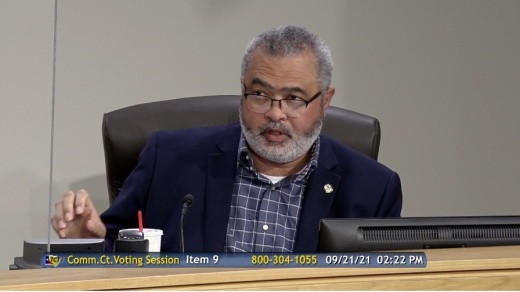The Commissioners Court must redraw lines for the county’s four commissioner precincts as well as the county’s roughly 200 election precincts to ensure each district is similar in size. They also have the option to redraw lines for justice of the peace and constable precincts, although it is not a requirement to do so under state or federal law.
Julie Wheeler, intergovernmental relations officer for Travis County, said the 2020 census showed “huge shifts” in the county’s population size and makeup. With over 1.29 million residents, the county has grown by 20.6% since 2010.
“Looking at the precinct distribution, you can see there is growth everywhere,” Wheeler said. “It’s not surprising to see those growth numbers, but it is still quite a feat that one, we were able to accomplish that with our counts during the census, and two, just the overwhelming number of people who have been moving here within the last decade.”
Precinct 1 experienced the most growth with its population expanding by 26.9% since 2010, followed by Precinct 3 at 24%, Precinct 2 at 15.1% and Precinct 4 at 14.7%.
When redrawing precinct lines, the county must ensure the precincts are similar in size, according to guidelines adopted by commissioners in accordance with state law. This year, they will each need to be close to 322,547, the average size of the county's precincts.
Travis County plans to secure a consultant to guide the process. Commissioners are scheduled to review a selected vendor Oct. 5. County staff will also reach out to community organizations that assisted with census outreach in 2020 to gather input on the process. Wheeler said the county would ideally have more time to solicit community input, but a delay in receiving census data has left Travis County with a cramped timeline to produce maps before Texas opens a filing period Nov. 29.
“It’s only been within the last couple of weeks that we’ve even received the data we need in order to draw our own maps,” she said. “It is going to be a marathon and a spring all rolled into one.”
Its racial demographics have shifted too with the Asian population becoming Travis County’s third-largest racial group, just ahead of the Black/African American population.
Precinct 1 Commissioner Jeff Travillion urged Wheeler and his colleagues to observe the movement of minority groups throughout the county when considering adjustments to precincts, particularly people moving away from historically Black neighborhoods in Austin and into places such as Pflugerville, Manor and Elgin.
“I think that we’ve got to take into consideration a lot of the out-migration patterns that are occurring from the city of Austin into the county because of affordability," he said.
He also said the county should consult the American Civil Liberties Union and other civil rights organizations that have expertise in underserved minority communities.





